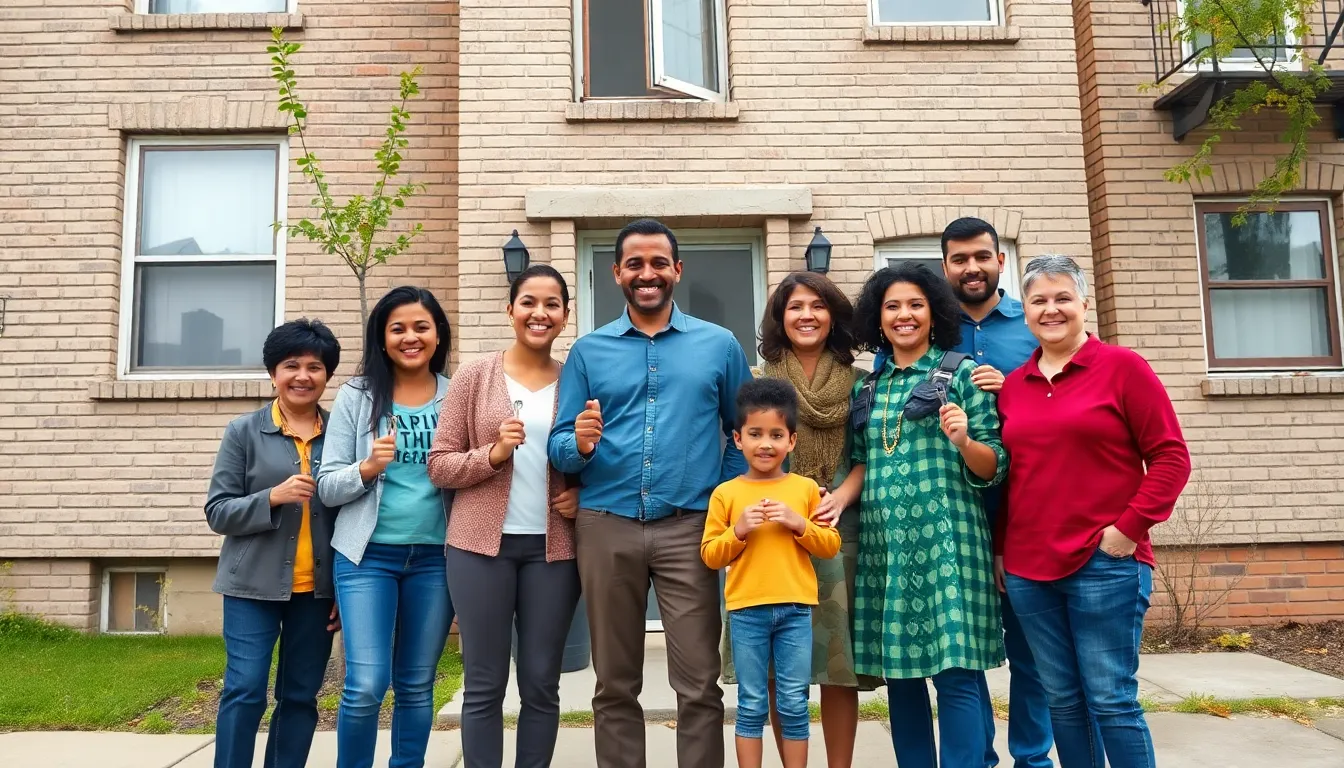Table of Contents
ToggleAffordable housing might sound like a mythical creature—like a unicorn that magically appears when you’re searching for a place to live. But it’s not just a fantasy; it’s a crucial part of community stability and personal well-being. In a world where rent prices can make your wallet weep, understanding what qualifies as affordable housing can help you navigate the tricky real estate jungle.
So what exactly does “affordable” mean? Is it just a fancy term for a shoebox in the city? Not quite! It’s about finding a balance between income and housing costs that doesn’t leave you eating instant noodles for the next month. Join the quest to uncover the true meaning of affordable housing and discover how it plays a vital role in creating thriving communities where everyone can find a place to call home.
Understanding Affordable Housing
Affordable housing encompasses various properties designed for individuals and families with limited incomes. Defined mainly by cost relative to income, it plays a crucial role in community and individual stability.
Definition of Affordable Housing
Affordable housing refers to units that don’t exceed a set percentage of a household’s income. Typically, this benchmark sits around 30% of gross income, which enables families to allocate funds for other essential needs, such as food and healthcare. Housing can include rental apartments, single-family homes, and townhouses, offering a range of choices for diverse households. Meeting the criteria often relies on local and federal guidelines, which vary by region.
Importance of Affordable Housing
Affordable housing significantly impacts social stability and economic growth. It helps maintain diverse neighborhoods, allowing residents from various backgrounds to coexist. Access to affordable housing can reduce homelessness rates and promote public health, as secure housing leads to better physical and mental health outcomes. Additionally, stable housing encourages community engagement and supports local economies by enabling residents to spend on goods and services.
Key Characteristics of Affordable Housing

Affordable housing features essential elements that ensure individuals and families can secure stable living situations without financial strain. Understanding these aspects is crucial for recognizing what qualifies as affordable housing.
Income Limitations
Income limitations play a pivotal role in defining affordable housing. Typically, this type of housing targets individuals and families earning below 80% of the area median income (AMI). For instance, in a metropolitan area with an AMI of $60,000, affordable housing focuses on households earning no more than $48,000. This structure guarantees that a significant portion of low-income residents can access appropriate housing options. Local governments often adjust these income thresholds based on economic conditions, ensuring that affordability remains relevant in different market environments.
Housing Costs and Pricing
Housing costs directly impact the classification of affordable housing. Generally, a household should spend no more than 30% of its gross income on housing expenses, including rent or mortgage payments and utilities. For example, if a household earns $40,000 annually, it should ideally pay under $12,000 per year on housing, translating to about $1,000 per month. By adhering to these pricing guidelines, affordable housing helps prevent residents from experiencing financial distress while allowing them to allocate resources toward other necessities like food, healthcare, and childcare.
Factors Influencing Affordable Housing
Various elements influence the availability and definition of affordable housing. Understanding these factors helps clarify the landscape of housing options for low-income individuals and families.
Location and Accessibility
Location significantly affects housing costs and availability. Urban areas typically experience higher demand and competition for affordable units. Proximity to public transportation, employment opportunities, and essential services also impacts housing accessibility. For instance, neighborhoods with good schools and healthcare facilities attract more residents, which can drive up rental prices. Accessibility to recreational spaces enhances community appeal, making affordable housing in these areas more sought after. Developers often prioritize locations that support diverse transportation options, boosting the appeal and affordability of housing.
Government Policies and Programs
Government initiatives play a crucial role in shaping affordable housing markets. Specific tax credits and subsidies target low-income residents, promoting the construction of affordable units. Regulations like inclusionary zoning require developers to allocate a percentage of new projects for affordable housing. Availability of housing vouchers provides additional support to families struggling with high rents. State and local governments often collaborate with nonprofit organizations to strengthen these efforts. These policies directly impact the housing crisis by ensuring low-income families can access safe and stable living environments.
Examples of Affordable Housing
Affordable housing manifests through various initiatives and solutions. Public and private sectors each contribute unique models to increase accessibility for low-income families.
Public Housing Initiatives
Public housing often includes government-funded projects aimed at providing residents with stable living conditions. These units typically feature reduced rents, set at 30% of a tenant’s income. Many developments receive funding from federal, state, and local governments. For instance, the U.S. Department of Housing and Urban Development (HUD) oversees significant programs promoting affordable housing. Specific initiatives like the Housing Choice Voucher Program enable families to seek housing in communities of their choice. This flexibility fosters diversity and community integration.
Private Sector Solutions
Private sector solutions also play a vital role in addressing affordable housing needs. Developers often engage in creating mixed-income housing projects, which integrate affordable units within market-rate developments. For example, programs like the Low-Income Housing Tax Credit (LIHTC) encourage investments in affordable housing by offering tax incentives to private developers. Partnerships between non-profits and private companies can further enhance options available to low-income families. These collaborations often lead to innovative housing solutions that effectively target various income levels.
Affordable housing is essential for fostering vibrant and stable communities. By ensuring that housing costs remain manageable for low-income families, it allows residents to focus on other critical aspects of their lives. The ongoing challenges in the housing market highlight the importance of innovative solutions and effective policies that prioritize accessibility and affordability. As communities continue to evolve, the commitment to preserving and expanding affordable housing options will play a crucial role in promoting social equity and economic growth. Ultimately, everyone deserves a safe and stable place to call home.







